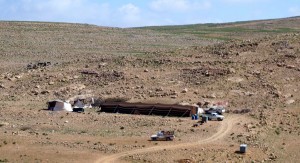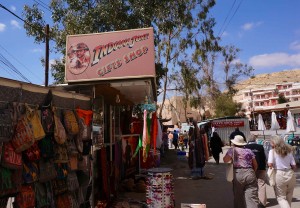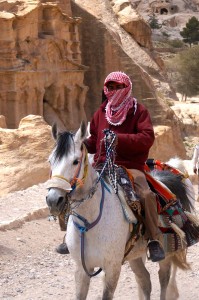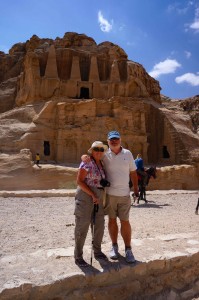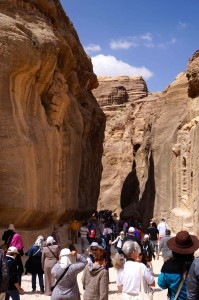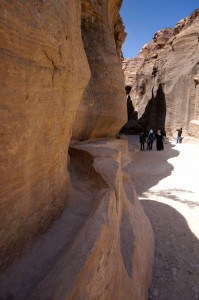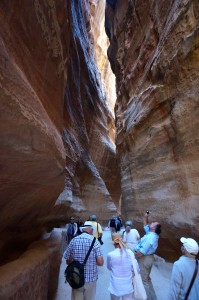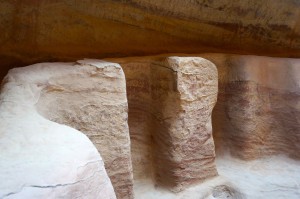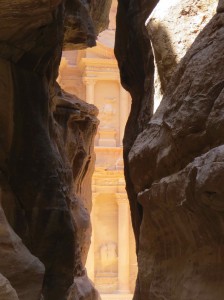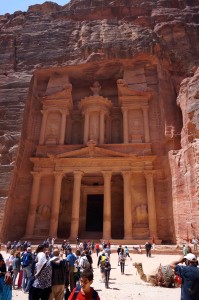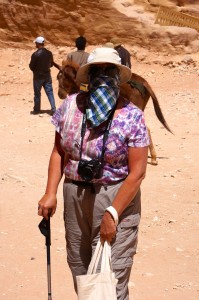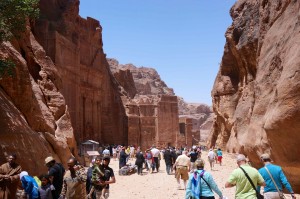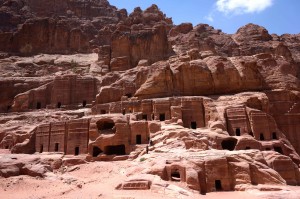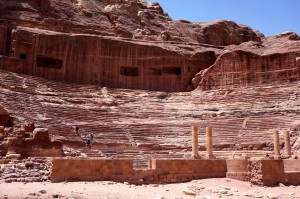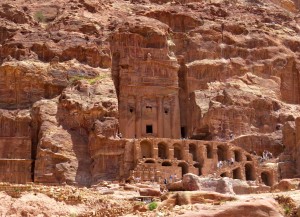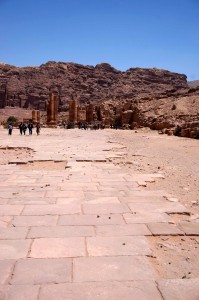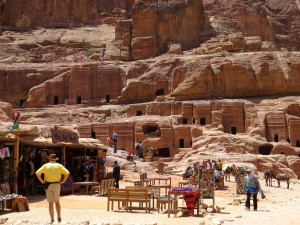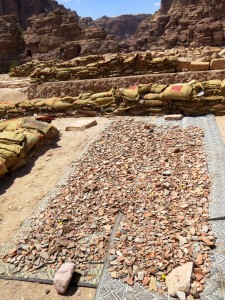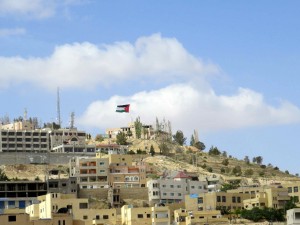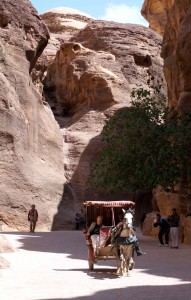- Getting ready to hit the road!
- Some thoughts on Hong Kong…
- A day in Danang and Hue, Vietnam
- Saigon River and Saigon, Vietnam
- Siem Reap and Temples, Cambodia
- The Floating Village — Kompong Phluk, Cambodia
- Phnom Penh and the road to Sihanoukville, Cambodia
- Bangkok, Thailand
- Day 2 in Bangkok — Ayutthaya, Thailand
- Singapore
- Langkawi Island, Malaysia
- Phuket, Thailand — or sort of…
- New Delhi, India
- Agra and the Taj Mahal
- The road to — and Jaipur, India
- India — a few closing thoughts.
- Dubai, United Arab Emirates
- Oman (The Sultanate of)
- Luxor, Karnak, and the Valley of the Kings, Egypt
- Petra, Jordan
- Sharm el Sheik and St. Catherine’s Monastery, Egypt
- Cairo and Giza, Egypt
- Egypt — Some final thoughts…
- Zooming around Israel
- Bodrum, Kusadasi, and Ephesus, Turkey
- Corfu, Greece
- Dubrovnik and Zadar, Croatia
- Venice, Italy — the last hurrah!
One of our favorite stops in the Middle East was Petra, the capital city of the ancient Nabataeans, an industrious Arabian people who settled in southern Jordan over 2000 years ago. Petra sat on the north-south trade route, with caravans bringing goods from the Red Sea up to Damascus and beyond. During Roman rule, it became the capital of Arabia and, in fact, you can still see parts of the Roman Road that passed through Petra. Ultimately, the combination of Rome’s decline and the shifting of trade routes caused Petra’s fortunes to wane and an earthquake in 363 A.D. destroyed many of the structures. The area (including many of the tombs) was looted and Petra more or less faded away except to the nomadic Bedouins until a Swiss traveler publicized the area in 1812. It was ultimately excavated by archaeologists starting in 1929. Today it is a UNESCO World Heritage site and is recognized as one of the Wonders of the Modern World.
What is amazing about Petra is that it was literally carved out of the red rock canyons where it is located. In addition to the settlement, Petra became famous for its tombs that were embedded in the cliffs. While the interiors of these structures weren’t very impressive, the facades were intricately carved out of the cliff face from the top down, resulting in beautiful detail. The Nabataeans also built an elaborate water system, including dams, cisterns, and water conduits carved into the rock.
To reach Petra, you have to walk down the mile long Siq, a narrow canyon that weaves back and forth. On the surface, this would seem pretty straightforward except for the Bedouins who drive carriages (they call them chariots) at breakneck speed, carrying passengers who choose not to walk, back and forth. You also have to dodge the donkeys and camels that are rented to the tourists. Once you get around a final corner, you get your first glance of the Treasury (it’s not really a treasury; it’s a tomb – long story!) that is probably the most impressive façade in Petra. Beyond that, the valley starts to open up, with the ruins of over 800 buildings, tombs, baths, temples/churches, and colonnaded streets laid out before you. It is amazing! You could easily spend days there, but we only had about 4 hours, so we made the best of it. Of course the challenge is that the walk to Petra is all downhill; the return is all uphill. As the day wore on, a big windstorm came up and we were eating and inhaling a lot of dust, but nobody complained – everyone was in awe!
One tiny bit of history – in 1917, T.E. Lawrence (Lawrence of Arabia) led a band of Syrians and Arabians to defend Petra against a much larger Turkish and German force. Even the women were recruited to fight and the small band thoroughly defeated the invading force (for some reason this reminds me of the scene in the Three Amigos where the villagers are fighting El Guapo to protect their village [“Sew like the wind, old woman!”]. Yeah, I know, kinda weird…).
Anyway, it’s safe to say that Petra was one of the most memorable sights on the trip!
